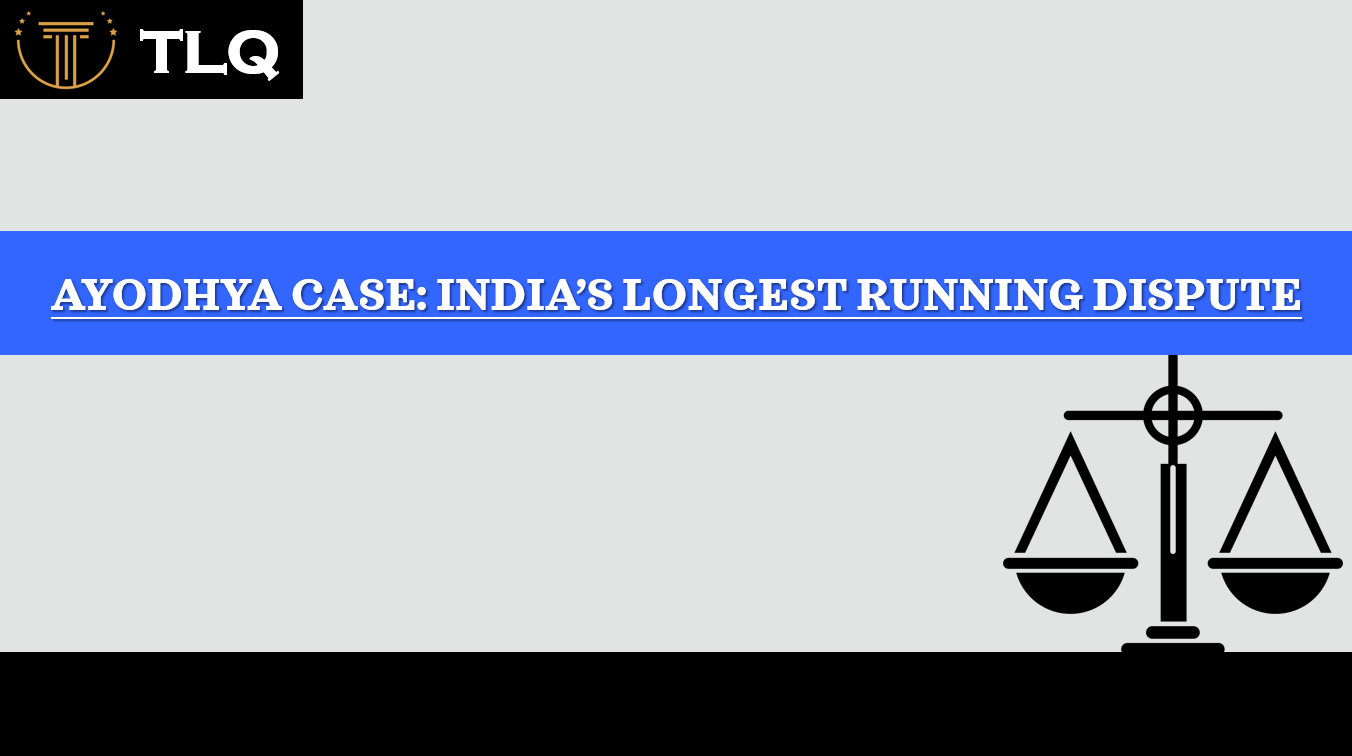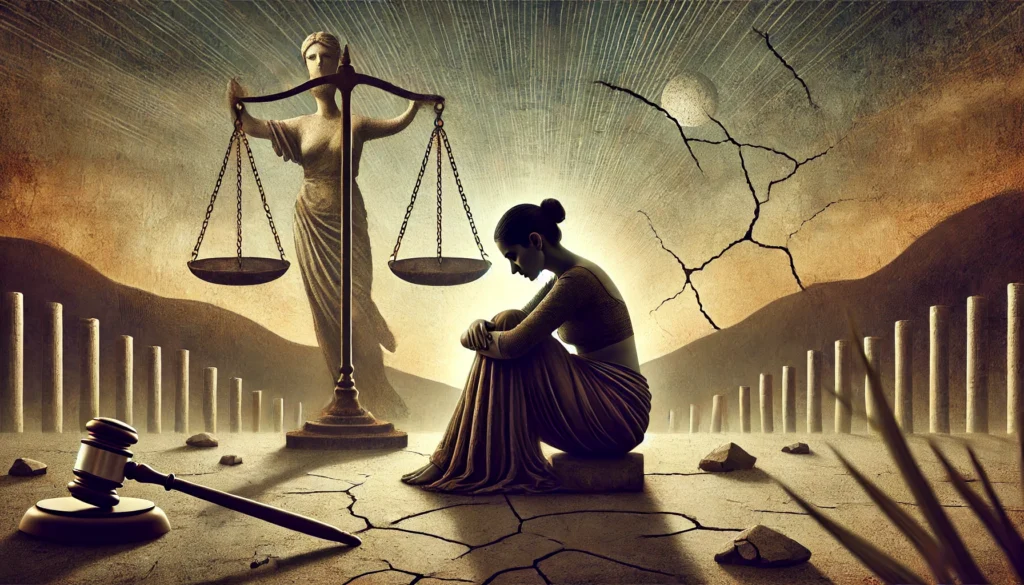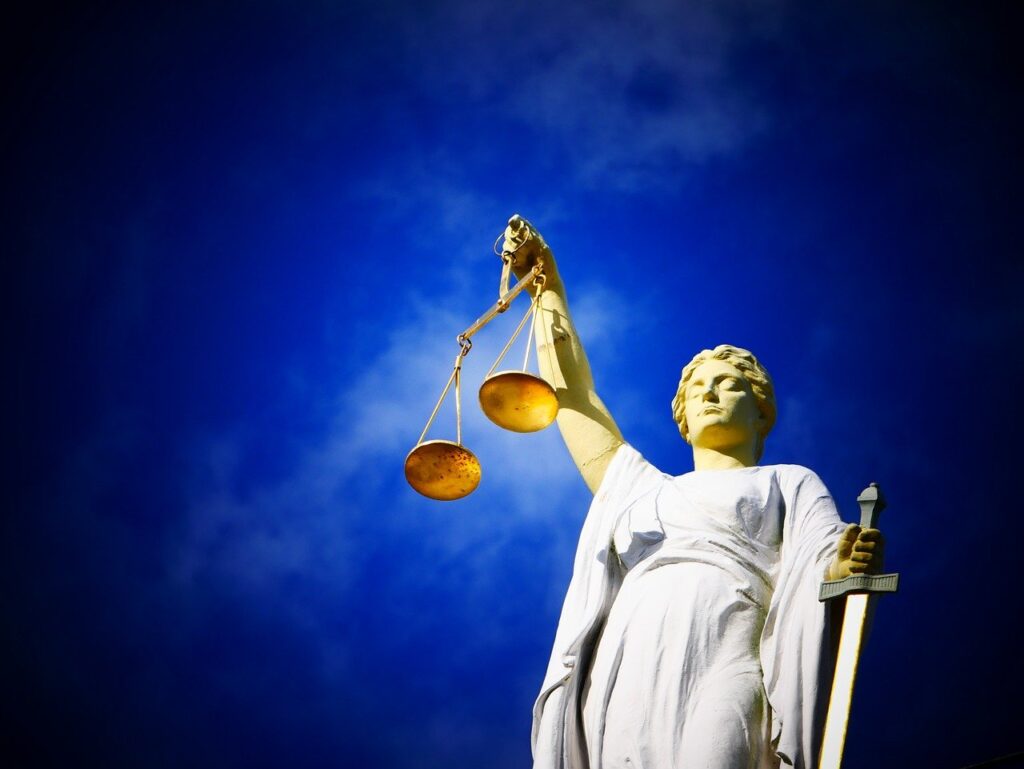Published On: 17th April, 2024

Authored By: Ratiksha Parate
Dr. Ambedkar College of Law, Nagpur
INTRODUCTION:
India, a country known for its rapid advancements and rich diversity, also holds strong sentiments and respect for religious practices. While this loyalty to religion is generally considered positive, it can also be exploited by politicians who manipulate these emotions for their own agendas, often leading to religiously motivated division and conflict. Despite the constitutional principle of secularism aimed at preserving all religions’ cultures and traditions, societal disharmony persists, sometimes resulting in prolonged legal disputes like the Ayodhya Dispute Case, formally known as M Siddiq (D) Thr Lrs v. Mahant Suresh Das & Ors. This case, intertwined with the slogan “Mandir wahi banayenge,” reflects the complex intersection of religion, politics, and law in Indian society.
M Siddiq (D) Thr Lrs v. Mahant Suresh Das & Ors:
The case, commonly referred to as the “Ayodhya Dispute Case,” spanned the tenures of all Prime Ministers of Independent India. This dispute, encompassing social, religious, historical, and political dimensions, revolved around a parcel of land in Ayodhya, Uttar Pradesh. Marked by its protracted nature, the case reached its culmination with the Supreme Court delivering its verdict on November 9, 2019.
FACTS OF THE CASE
The narrative of Ayodhya depicts a city shared by Hindus, who revere it as the birthplace of Lord Rama, and Muslims, who recognize it as the site of the Babri Mosque erected by Babur, the first Mughal emperor, in 1528. The first instance of religious violence in Ayodhya dates back to 1850, sparked by tensions over a nearby mosque at Hanuman Garhi, which led to an attack on the Babri Mosque by Hindus.
Local Hindus have intermittently demanded ownership of the land on which the Babri Mosque stood, asserting their right to construct a temple there, believing the mosque was built upon the ruins of a Hindu temple. However, their requests were consistently denied by the colonial government.
In December 22, 1949, an offshoot of the Hindu Mahasabha known as the Akhil Bharatiya Ramayana Mahasabha (ABRM) organized a nine-day continuous recitation of the Ramcharitmanas, culminating in Hindu activists breaking into the mosque and installing idols of Rama and Sita inside. Prime Minister Jawaharlal Nehru ordered the removal of the idols, but a local official, K.K.K. Nair, refused, fearing communal unrest. Subsequently, the police locked the gates, prohibiting entry for both Hindus and Muslims, while allowing priests to conduct daily worship inside the mosque, effectively converting it into a makeshift temple.
The legal battle over Ayodhya commenced in 1950 when Gopal Singh Visharad, the Ayodhya secretary of the Hindu Mahasabha, filed a petition after being denied entry. The court proceedings stretched over almost a decade, with the Nirmohi Akhara filing another claim in 1959, asserting their right to the area. In response, the Sunni Central Waqf Council, established by Indian law to safeguard Muslim religious and cultural sites, filed a counter-request in 1961.
ISSUES RAISED
One of the key issues in this case concerned the historical claim over the land traditionally considered to be the birthplace of Lord Rama and the disputed history surrounding the construction of the Babri Mosque.
Specifically, the central question revolved around whether a pre-existing Hindu temple was demolished or altered to make way for the mosque constructed by Babur.
WRITTEN SUBMISSION OF PARTIES OF THE CASE
Following a lengthy 14-day hearing, the Supreme Court granted all parties involved in the case a three-day window to submit written statements outlining their respective prayers or requests. Below are summaries of the written submissions provided by the various parties involved in the case.
Nirmohi Akhara
- If the verdict favors one of the Hindu parties, the Akhara should retain the right to serve the deity.
- Permission to construct a Ram temple on the disputed site, with Nirmohi Akhara authorized to manage the premises upon completion.
- If the court upholds the 2010 verdict of the High Court of Allahabad and the Muslim parties refrain from constructing on the disputed site, they should lease their share of the land to the Hindu parties for the construction of a large Ram temple. (The High Court verdict divided the land into three parts: Sunni Waqf Council, Nirmohi Akhara, and Ram Lalla)
- The court should instruct the government to provide land to the Muslim side for the construction of a mosque outside the disputed area.
Ram Lalla Virajman
- The written submission on behalf of Ram Lalla Virajman asserts that the court should award all the disputed lands to Ram Lalla.
- It further contends that no portion of the disputed land should be allocated to either the Nirmohi Akhara or the Muslim parties.
Ram Janambhoomi Punar Sudhar Samiti
- Sole permission should be granted for the construction of a Ram temple on the contentious site in Ayodhya.
- Upon completion of the temple, a trust must be established to oversee its management.
Gopal Singh Visharad
- Gopal Singh Visharad, whose ancestors have conducted rituals at the temple site for generations, contended that it is his constitutional entitlement to offer prayers at Ram Janmabhoomi.
- His assertion emphasized that there should be no concessions made in the Ram Janmabhoomi case.
Sunni Waqf Board
- The Commission has expressed its desire to seek the same relief as requested during the hearings. Counsel for the Commission, Rajeev Dhawan, had urged for the restoration of the Babri Masjid to its original form prior to its destruction on December 6, 1992.
Hindu Mahasabha
- It is anticipated that the Supreme Court will establish a trust to supervise the administration of the Ram temple slated for construction on the contested site in Ayodhya.
- The Supreme Court is urged to designate an administrator to oversee this trust.
Shia Waqf Board
- During their plea before the High Court of Allahabad, they proposed that the Muslim parties relinquish their claim on the contested land and transfer it to the Hindu parties for the construction of a Ram temple.
- The Shia Waqf board directors, in a written statement, advocated for the construction of a Ram temple on the disputed site in Ayodhya.
- They asserted that the Waqf Shiite council holds lawful ownership of the disputed land, challenging the claim of the Waqf Sunni council.
- The land awarded to the Sunni Waqf Council in the High Court ruling is now suggested to be transferred to the Hindu parties.
JUDGEMENT
The bench comprising five judges of the Supreme Court presided over the litigation on the title from August to October 2019. On November 9, 2019, Chief Justice Ranjan Gogoi delivered the verdict, overturning the previous ruling and determining that the land, based on tax records, belonged to the government. He directed that the land be transferred to a trust for the construction of a Hindu temple and mandated the government to donate an additional five-acre parcel to the Waqf Sunni Council for a mosque.
Key points highlighted in the judgment:
- The Supreme Court awarded the entire 2.77 acres of disputed land in Ayodhya to the deity Ram Lalla.
- It instructed the Central and Uttar Pradesh governments to provide a 5-acre alternative site to Muslims at a prominent location for a mosque.
- The court suggested considering some form of representation for Nirmohi Akhara in setting up a trust, as it was a third party in the Ayodhya conflict.
- The plea of Nirmohi Akhara to control all disputed lands as its custodian was rejected by the Supreme Court.
- The Union government was directed to establish a trust within three months for the construction of the Ram Mandir on the demolished Babri Masjid site.
- The court stated that while the structure below the disputed site in Ayodhya was not Islamic, it remained inconclusive whether a temple was demolished to build a mosque.
- It acknowledged the Hindus’ belief in the site as the birthplace of Lord Ram and Muslims’ association with the site of Babri Masjid.
- The court affirmed that the Hindus’ belief regarding Lord Rama’s birthplace at the former Babri Masjid site was beyond dispute.
- It deemed the 1992 demolition of the 16th-century Babri Masjid mosque as illegal.
- During the judgment, the Supreme Court noted that the Waqf Central Sunni Council of Uttar Pradesh failed to establish its claim in the Ayodhya dispute, while Hindus demonstrated possession of the outer courtyard of the disputed site.
A BRIEF TIMELINE FROM THE OCCURRENCE OF THE DISPUTE TO THE DISPUTE END OF THE DISPUTE
- On December 6, 1992, the Babri mosque was demolished by a gathering of approximately 200,000 Karsevaks, triggering communal riots across India.
- Ten days later, on December 16, 1992, the Congress-led government at the Center, under PV Narasimha Rao, established a commission of inquiry led by Judge Liberhan.
- The final hearing on the case began on August 6, 2019, before a 5-judge constitutional bench of the Supreme Court, presided over by Chief Justice Ranjan Gogoi.
- On October 16, 2019, the final hearing before the Supreme Court concluded, with the bench reserving the final judgment. The parties involved were given three days to submit written notes on the issues the court needed to decide.
- The final judgment was delivered on November 9, 2019. The Supreme Court ordered the transfer of the land to a trust for the construction of the Ram Temple and directed the government to allocate 5 acres of land within Ayodhya city limits to the Sunni Waqf Council for a mosque.
- On December 12, 2019, the Supreme Court dismissed all petitions for the review of the verdict.
CONCLUSION
This case holds significance as it marks a prolonged chapter in the history of the Indian Judiciary, spanning across the tenures of all Prime Ministers from Jawaharlal Nehru to Narendra Modi. Ultimately, on November 9, 2019, this dispute was resolved. The Supreme Court, in its judgment, aimed to approach the case with harmony, seeking to strike a balance between both religions. The Court granted the entire 2.77 acres of disputed land in Ayodhya to the deity Ram Lalla and directed the Central and Uttar Pradesh governments to allocate 5 acres of alternative land to Muslims for a mosque at a prominent location.
In my opinion, the focus should be directed towards addressing real issues that contribute to the development of the country, such as poverty, unemployment, and agriculture. We must not fall into the trap of religious sentiments exploited by politicians. Politicians often divert attention by exploiting religious issues, employing the concept of “Divide and rule” to secure electoral victories. This case serves as an example, as the dispute became a prominent agenda in past Lok Sabha elections.
REFERENCES
- Kapur, Ratna. (2014). The “Ayodhya” Case: Hindu Majoritarianism and the Right to Religious Liberty. Maryland Journal of International Law. 29. 305.
- The Ayodhya Judgment: What Next? NIVEDITA MENON Economic and Political Weekly Vol. 46, No. 31 (JULY 30-AUGUST 5, 2011), pp. 81-89 (9 pages) Published By: Economic and Political Weekly
- https://www.business-standard.com/about/what-is-ayodhya-case
- https://www.theleaflet.in/ayodhya-verdict-historical-legal-social-and-moral-implications/
- http://www.legalserviceindia.com/legal/article-3786-ayodhya-dispute.html
- http://www.legalserviceindia.com/legal/article-1548-a-synopsis-of-the-ayodhya-ram-mandir-babri-masjid-case.html
- https://www.sci.gov.in/pdf/JUD_2.pdf
- https://www.epw.in/system/files/pdf/2010_45/50/Dissecting_the_Ayodhya_Judgment.pdf
- https://www.legalbites.in/schools-of-jurisprudence-notes/
- https://bnblegal.com/article/schools-of-jurisprudence/
- www.indiankanoon.org
- https://www.scconline.com





